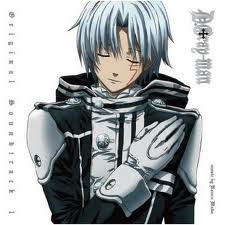In March 1897 Emilio Aguinaldo was elected President of a revolutionary government at the Tejeros Convention.[10] The new government was meant to replace the Katipunan as a government, though the latter was not formally abolished until 1899. Aguinaldo was again elected President at Biak-na-Bato in November, leading the Biak-na-Bato Republic. Exiled in Hong Kong after the Pact of Biak-na-Bato, with the advent of the Spanish-American War he returned to the Philippines to renew revolutionary activities and formed a dictatorial government on May 24, 1898. Revolutionary forces under his command declared independence on June 12, 1898. On June 23, 1898, Aguinaldo transformed his dictatorial government into a revolutionary government. On January 23, 1899, he was then elected President of the Philippine Republic (Spanish: República Filipina), a government constituted by the Malolos Congress. Thus, this government is also called the Malolos Republic. Sovereignty over the Philippines passed from Spain to the United States with the Treaty of Paris, which ended the Spanish-American War. Aguinaldo's government effectively ceased to exist on April 1, 1901, when he pledged allegiance to the United States after being captured by U.S. forces in March. The current Philippine government, formally called the Republic of the Philippines, considers Emilio Aguinaldo to be the first President of the Philippines and the Malolos Republic as the "First" Philippine Republic.[11]
Miguel Malvar continued Aguinaldo's leadership of the Philippine Republic after the latter's capture until his own capture in 1902, while Macario Sakay founded a Tagalog Republic in 1902 as a continuation of Bonifacio's Katipunan. They are both considered by some scholars as "unofficial presidents". Along with Bonifacio, Malvar and Sakay are not recognized as Presidents by the Philippine government.[12][13]
Between 1901 and 1935, executive power in the Philippines was exercised by a succession of 16 American Governors General. In October 1935, Manuel L. Quezón was elected the first President of the Commonwealth of the Philippines which had been established, still under U.S. sovereignty, under a constitution ratified on May 14 of that year. When President Manuel L. Quezon left for the United States via Australia, he appointed Chief Justice José Abad Santos Acting President. President Santos was subsequently executed by the Japanese occupation forces on May 2, 1942.
José P. Laurel became president of the Philippines in 1942 under a constitution imposed under Japanese occupation. Laurel, an Associate Justice of the Supreme Court, had been instructed to remain in Manila by President Manuel L. Quezon, who fled to Corregidor and then to the United States to establish a government-in-exile.
The 1935 constitution was reinstated after the Japanese surrender ended World War II, with Sergio Osmeña as President, Osmeña having succeeded to the Presidency after 1944 the death of President Quezon. That constitution remained in effect after the United States recognized the independence of the Republic of the Philippines as a separate self-governing nation on July 4, 1946.
A new constitution ratified on January 17, 1973, during the presidency of Ferdinand E. Marcos, introduced a parliamentary-style government. This constitution was in effect until the People Power Revolution of 1986 swept Corazon C. Aquino into power as President. On March 25, 1986, Presidential Proclamation No. 3 promulgated a provisional constitution, which was supplanted on February 2, 1987 when the now-current constitution was ratified.
Both Bonifacio and Aguinaldo might be considered to have been an inaugural president of an insurgent government. Quezón was the inaugural president of a predecessor-government to the current one, and Aquino was the inaugural president of the currently-constituted government.

Home provinces of the presidents.
While the Philippine government considers Emilio Aguinaldo to be the first president, the First Republic fell under the United States following the Philippine-American War, and the United States does not consider his presidency to have been legitimate.[11][15] Manuel L. Quezon is considered to be the first president by the United States and the first to win an election. The Philippines had two presidents at one point during World War II heading two governments. One was Quezón heading the Commonwealth government-in-exile (considered de jure) and the other was J. P. Laurel heading the Japanese-sponsored republic (considered de facto). Laurel was instructed to remain in Manila by President Manuel L. Quezón. Laurel was not recognized as a Philippine president formally until the Macapagal administration. The recognition coincided with the movement of the Philippine Independence Day from July 4 to June 12. However, it must be borne in mind that in the roster of presidents, it is inaccurate to consider Laurel the successor of Osmeña or vice versa; Laurel's republic was formally rejected after World War II and none of its statutes or actions were considered legal or binding. The inclusion of Laurel causes some problems in determining the order of presidents. Quezón, Osmeña, and Roxas, for example, were three of a continuous constitutional line; Laurel was the only President of the Second Republic. Thus, Laurel has no predecessor and successor, while Osmeña was Quezón's successor and Roxas was Osmeña's successor.









































































No comments:
Post a Comment